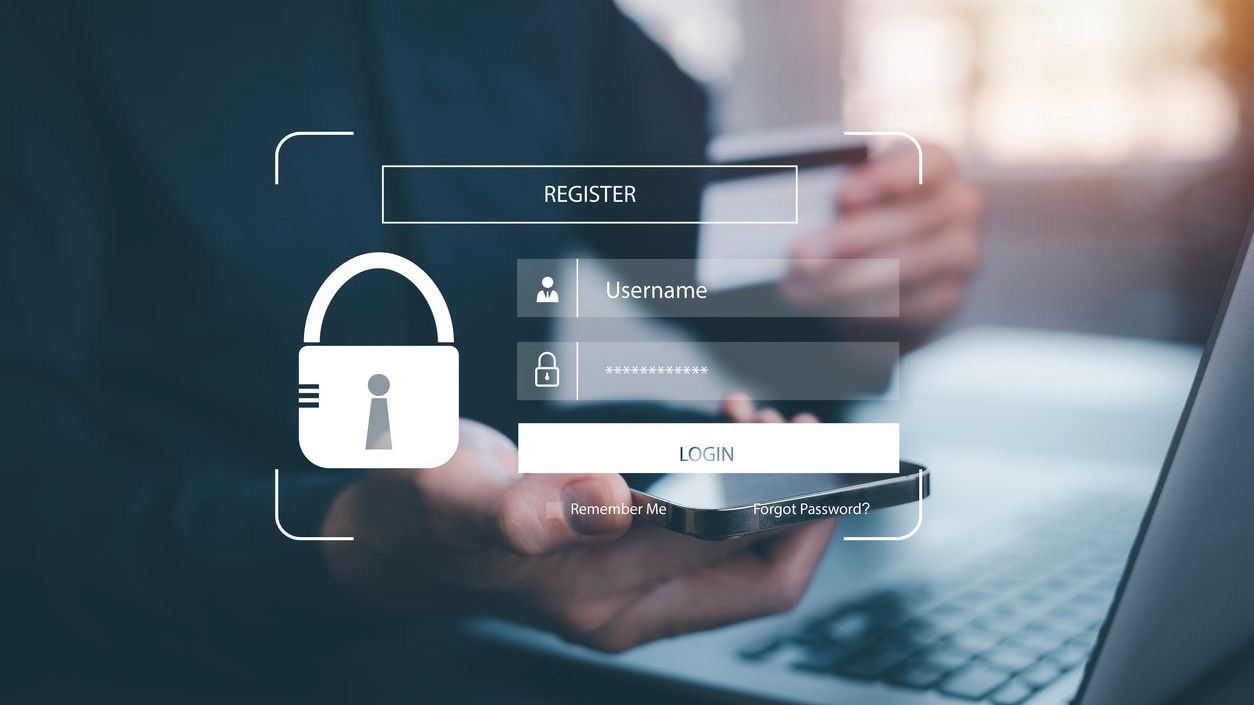In today’s rapidly evolving business landscape, effective authorization management is becoming increasingly critical for organizations seeking to maintain security while enabling workforce flexibility. Authorization level changes within enterprise scheduling systems represent a complex but essential component of modern workforce management, balancing access control with operational efficiency. When properly implemented, these systems provide granular control over who can view, create, modify, or approve schedules, time-off requests, shift swaps, and other critical scheduling functions, all while maintaining appropriate security boundaries and compliance requirements.
The integration of authorization controls within scheduling frameworks creates a crucial layer of governance that supports organizational hierarchies, departmental boundaries, and role-based permissions. As businesses adopt more sophisticated employee scheduling software, understanding how to implement, manage, and optimize authorization level changes becomes paramount. This comprehensive approach ensures that the right people have the right access at the right time, protecting sensitive information while enabling the necessary flexibility that modern workforces demand.
Understanding Authorization Levels in Enterprise Scheduling Systems
Authorization levels in enterprise scheduling systems establish the framework for who can perform specific actions within the scheduling environment. Unlike authentication, which verifies user identity, authorization determines what authenticated users are permitted to do. Well-designed integration technologies allow organizations to create sophisticated permission structures that reflect their operational hierarchies and business requirements.
- Hierarchical Authorization Structures: Define permissions based on organizational position, with managers having broader access than line-level employees.
- Role-Based Access Controls (RBAC): Assign permissions based on job functions rather than individual identities, simplifying administration.
- Attribute-Based Access Controls (ABAC): Permit more dynamic authorization decisions based on multiple attributes including time, location, and department.
- Delegation Capabilities: Allow temporary transfer of authority to handle scheduling tasks during absences or special circumstances.
- Segregation of Duties: Implement controls that prevent conflicts of interest by ensuring critical tasks are divided among different individuals.
Understanding these foundational concepts is essential for implementing effective integrated systems that serve the diverse needs of enterprise scheduling environments. Organizations must carefully consider their operational structure when designing authorization frameworks, taking into account both current requirements and potential future needs.
Common Authorization Level Categories for Scheduling Systems
In enterprise scheduling environments, authorization levels typically fall into distinct categories that provide different capabilities across the system. Implementing a comprehensive scheduling software solution requires careful consideration of these permission structures to ensure effective operations while maintaining appropriate security boundaries.
- View-Only Access: Permits users to see schedules, availability, and roster information without making changes, ideal for employees who need awareness but not editing capabilities.
- Self-Management Access: Allows employees to manage their own availability, request time off, and volunteer for open shifts without affecting others’ schedules.
- Team Leader Authorization: Enables mid-level supervisors to approve time-off requests, shift swaps, and make schedule adjustments for their direct reports only.
- Department Manager Access: Provides broader capabilities for managing entire departments, including creating schedules, handling exceptions, and reporting across teams.
- Administrator Privileges: Grants comprehensive control over the system, including configuration changes, integration management, and cross-departmental oversight.
Careful implementation of these authorization categories helps organizations balance operational efficiency with appropriate controls. Modern employee scheduling systems can provide the flexibility to customize these levels to match specific business needs while maintaining security and compliance requirements.
Implementing Authorization Level Changes: Strategic Approaches
Successfully implementing authorization level changes requires thoughtful planning and execution. Organizations must consider both the technical aspects and the human factors involved in modifying access controls within scheduling software. A strategic approach helps minimize disruption while ensuring proper security governance.
- Needs Assessment: Begin with a thorough analysis of current operations, identifying pain points and opportunities where authorization changes could improve efficiency or security.
- Stakeholder Involvement: Engage representatives from all levels of the organization to understand scheduling requirements, concerns, and expectations.
- Phased Implementation: Roll out authorization changes gradually, starting with pilot groups before expanding to the entire organization.
- Clear Documentation: Create comprehensive documentation of the new authorization structure, including visual representations of permission hierarchies.
- Training Program Development: Design targeted training materials for each user group to ensure understanding of new permissions and responsibilities.
Effective implementation requires coordination between IT, human resources, and operational teams. Companies that invest in proper implementation and training typically experience smoother transitions and greater adoption rates. The goal is to create a system that enhances productivity while maintaining appropriate security boundaries and compliance requirements.
Technical Considerations for Authorization Level Management
The technical infrastructure supporting authorization level changes demands careful consideration to ensure robustness, scalability, and security. Integrating authorization controls with enterprise scheduling systems requires attention to numerous technical factors that affect system performance and user experience. Organizations implementing cloud computing solutions for scheduling must be particularly attentive to these considerations.
- API Security: Ensure all API endpoints that manage authorization changes implement proper authentication, input validation, and access controls.
- Data Encryption: Implement encryption for authorization data both in transit and at rest to protect against unauthorized access.
- Single Sign-On Integration: Connect authorization systems with enterprise SSO solutions to streamline user experience and enhance security.
- Audit Logging: Maintain comprehensive logs of all authorization changes, including who made changes, when they occurred, and what was modified.
- Scalability Planning: Design authorization systems that can grow with the organization, accommodating increasing numbers of users and roles.
The integration between scheduling platforms and enterprise systems requires careful attention to data synchronization and system compatibility. Organizations with complex environments should consider robust integration capabilities to ensure seamless operation across their technology ecosystem. Proper technical implementation creates the foundation for effective authorization management that can evolve with organizational needs.
Best Practices for Authorization Change Management
Effective management of authorization level changes requires disciplined processes and governance to maintain security while accommodating evolving business needs. Organizations with mature change management practices can implement authorization modifications with minimal disruption while ensuring proper controls remain in place.
- Formal Change Request Process: Establish a structured workflow for requesting, reviewing, and approving authorization changes with appropriate stakeholder involvement.
- Principle of Least Privilege: Grant only the minimum level of access necessary for users to perform their job functions, reducing potential security risks.
- Regular Access Reviews: Conduct periodic audits of authorization levels to identify and remediate excessive permissions, orphaned accounts, or other security gaps.
- Emergency Access Procedures: Develop clear protocols for granting temporary elevated access during critical incidents, ensuring proper oversight and reversion afterward.
- Centralized Authorization Management: Maintain a single source of truth for all authorization configurations to prevent inconsistencies and security gaps.
Organizations should integrate these practices with their broader data privacy principles to ensure authorization changes maintain compliance with relevant regulations and internal policies. By establishing clear governance for authorization management, companies can maintain security while enabling the operational flexibility needed for effective scheduling.
Security Implications of Authorization Level Changes
Authorization level changes carry significant security implications that must be carefully considered to protect sensitive scheduling data and maintain operational integrity. Organizations implementing scheduling software security features should understand how authorization modifications can affect their overall security posture.
- Privilege Escalation Risks: Improper authorization changes can inadvertently create opportunities for users to gain access beyond their intended permissions.
- Data Exposure Concerns: Overly broad permissions may result in sensitive employee information being visible to unauthorized personnel, potentially violating privacy regulations.
- Insider Threat Mitigation: Well-designed authorization controls help reduce risks from malicious insiders by limiting access to critical functions.
- Change Verification Protocols: Implement verification steps to ensure authorization changes achieve intended outcomes without introducing security vulnerabilities.
- Security Monitoring Integration: Connect authorization systems with security monitoring tools to detect suspicious patterns that might indicate misuse or compromise.
Organizations should approach authorization management as a critical component of their overall cybersecurity strategy. Incorporating security best practices into authorization workflows helps prevent security incidents while maintaining operational efficiency. Regular security assessments should include review of authorization configurations to identify and remediate potential vulnerabilities.
Compliance Requirements for Authorization Management
Authorization systems must adhere to various regulatory requirements depending on industry, geography, and data types. Compliance considerations significantly influence how organizations design and manage their authorization frameworks, particularly for labor compliance in scheduling systems. Understanding these requirements is essential for implementing compliant authorization structures.
- GDPR Compliance: European regulations require strict controls over who can access employee personal data, with documentation of access justifications.
- HIPAA Requirements: Healthcare organizations must implement role-based access for scheduling systems that contain protected health information.
- SOX Controls: Public companies must maintain proper segregation of duties in systems that affect financial reporting, including labor scheduling.
- Industry-Specific Regulations: Sectors like financial services and critical infrastructure have additional requirements for access control and authorization management.
- Documentation Requirements: Maintain records of authorization policies, changes, approvals, and periodic reviews to demonstrate compliance during audits.
Organizations should develop a comprehensive compliance strategy that addresses all relevant regulations while maintaining operational efficiency. Scheduling solutions with robust reporting and analytics capabilities help demonstrate compliance during audits and regulatory reviews. Working with legal and compliance teams during authorization design helps ensure systems meet all applicable requirements from the outset.
Integration Challenges with Existing Enterprise Systems
Integrating authorization frameworks with existing enterprise systems presents significant challenges that organizations must navigate to ensure seamless operations. As businesses implement HR management systems integration, they must address various technical and operational hurdles to maintain continuous service while enhancing security.
- Identity Synchronization: Ensuring consistent user identity information across multiple systems to prevent authorization discrepancies.
- Legacy System Compatibility: Adapting modern authorization models to work with older systems that may have limited access control capabilities.
- Real-time Authorization Updates: Implementing mechanisms to propagate authorization changes across integrated systems with minimal delay.
- Conflicting Permission Models: Reconciling different approaches to permissions and access control across diverse enterprise applications.
- Data Transformation Requirements: Converting authorization data between systems with different formats, structures, and semantics.
Organizations should develop comprehensive integration strategies that address these challenges through careful planning and testing. Leveraging standards-based approaches and payroll software integration tools can help streamline the process. Successful integration creates a cohesive ecosystem where authorization changes propagate efficiently across all connected systems while maintaining security boundaries.
Monitoring and Reporting on Authorization Changes
Effective monitoring and reporting mechanisms are essential for maintaining visibility into authorization changes and ensuring continued system integrity. Organizations implementing advanced system performance evaluation for their scheduling platforms should incorporate robust monitoring for authorization modifications as a critical security control.
- Change Tracking Dashboards: Implement visual interfaces that provide at-a-glance views of recent authorization changes across the scheduling environment.
- Automated Alerts: Configure notification systems to alert security teams about unusual or high-risk authorization modifications.
- Compliance Reporting: Generate regular reports demonstrating adherence to regulatory requirements and internal policies for authorization management.
- Anomaly Detection: Implement machine learning tools that identify suspicious patterns in authorization changes that may indicate security issues.
- Historical Analysis: Maintain searchable logs of all authorization changes to support forensic investigation and compliance audits.
Comprehensive monitoring capabilities provide both operational benefits and security advantages. Organizations should integrate authorization monitoring with their broader advanced analytics and reporting frameworks to gain holistic insights into system usage and potential security concerns. Regular review of authorization reports helps identify opportunities for optimization while ensuring proper security controls remain effective.
Future Trends in Authorization Management for Scheduling
The landscape of authorization management for enterprise scheduling continues to evolve, driven by technological advancements and changing business requirements. Organizations should stay informed about emerging trends to ensure their authorization frameworks remain effective and future-proof. Several key developments are shaping the future of AI and machine learning in scheduling authorization.
- Adaptive Authorization: Systems that dynamically adjust permissions based on contextual factors like time, location, device, and user behavior patterns.
- Decentralized Identity Management: Blockchain-based approaches that give users more control over their identity while maintaining organizational security requirements.
- AI-Powered Access Decisions: Machine learning algorithms that assist in determining appropriate authorization levels based on job requirements and risk profiles.
- Continuous Authentication Integration: Authorization systems that factor in ongoing verification of user identity rather than just point-in-time authentication.
- Zero Trust Architectures: Authorization frameworks that assume no implicit trust regardless of network location, requiring continuous verification for all access requests.
Organizations should monitor these trends while developing long-term strategies for authorization management. Implementing modern scheduling software solutions with flexible authorization frameworks allows companies to adapt as these technologies mature. Staying current with evolving authorization approaches helps maintain security while enabling the operational flexibility needed in modern business environments.
Conclusion: Building an Effective Authorization Strategy
Effective authorization management represents a critical success factor for organizations implementing enterprise scheduling solutions. By carefully designing, implementing, and maintaining appropriate authorization structures, companies can balance operational flexibility with security requirements, enabling workforce optimization while protecting sensitive information. The most successful implementations take a holistic approach, considering technical requirements alongside human factors, compliance needs, and business objectives.
Organizations should prioritize developing comprehensive authorization strategies that evolve with changing business requirements and technology landscapes. This includes establishing clear governance processes, implementing robust technical controls, maintaining appropriate documentation, and providing thorough training for all stakeholders. With proper attention to authorization management, companies can fully leverage the capabilities of modern workforce scheduling platforms while maintaining security and compliance in increasingly complex enterprise environments.
FAQ
1. What is the difference between authentication and authorization in scheduling systems?
Authentication verifies the identity of users attempting to access the scheduling system, typically through credentials like usernames and passwords, multi-factor authentication, or SSO mechanisms. Authorization, on the other hand, determines what actions those authenticated users can perform within the system. While authentication answers “Who is this user?”, authorization addresses “What is this user allowed to do?” Both components are essential for comprehensive security, but they serve distinct purposes in the access control framework.
2. How often should organizations review and update authorization levels?
Organizations should conduct formal reviews of authorization levels at least quarterly, with additional reviews triggered by significant events such as organizational restructuring, system changes, or security incidents. Regular reviews help identify excessive permissions, orphaned accounts, or authorization inconsistencies that could pose security risks. Additionally, implementing continuous monitoring can help detect anomalies or potential issues between formal reviews, allowing for more timely remediation of authorization concerns.
3. What compliance regulations most commonly affect authorization in scheduling systems?
Several key regulations frequently impact authorization management in scheduling systems: GDPR for organizations handling European employee data, which requires strict access controls and documentation; HIPAA for healthcare organizations, which mandates role-based access to systems containing protected health information; SOX for public companies, which requires segregation of duties in systems affecting financial reporting; and industry-specific regulations like PCI DSS for payment processing, FERPA for educational institutions, and various labor laws regarding scheduling transparency and access to work records.
4. How can organizations balance security needs with operational flexibility in authorization design?
Balancing security and flexibility requires a thoughtful approach to authorization design. Organizations should implement role-based access control aligned with job functions rather than individuals, establish clear delegation mechanisms for temporary authority transfers, create granular permission sets that can be combined to match specific needs, implement approval workflows for higher-risk actions rather than blocking them entirely, and leverage modern scheduling platforms with flexible authorization frameworks. Regular feedback from end-users helps identify areas where authorization controls may be unnecessarily restrictive, allowing for targeted adjustments that maintain security while improving operational efficiency.
5. What are the most common challenges when implementing authorization level changes?
Organizations typically face several challenges when implementing authorization changes: resistance from users accustomed to broader access; technical integration difficulties with legacy systems; maintaining consistency across multiple integrated applications; properly communicating changes to affected users; ensuring compliance with various regulations and internal policies; managing the approval process for authorization modifications; unexpected side effects from permission changes; and measuring the impact on operational efficiency. Addressing these challenges requires careful planning, stakeholder engagement, thorough testing, and clear communication throughout the implementation process.












